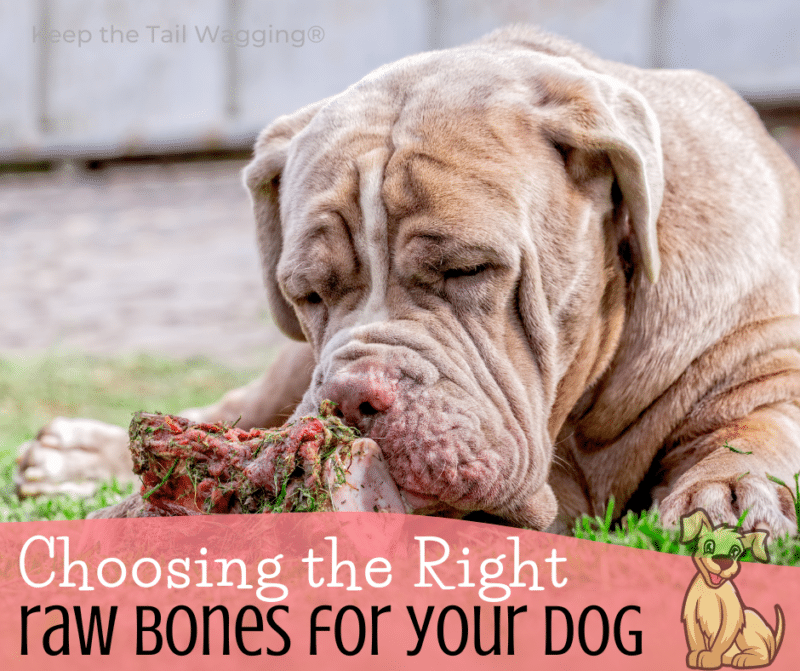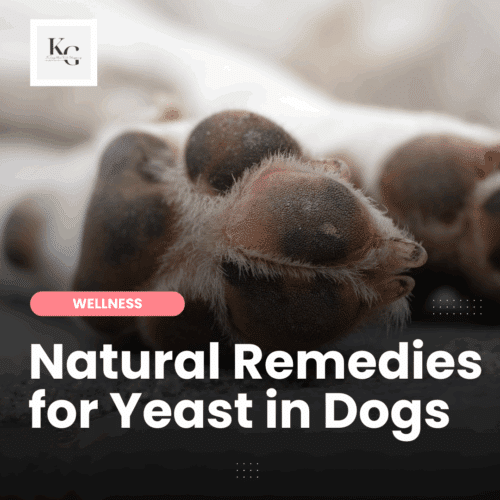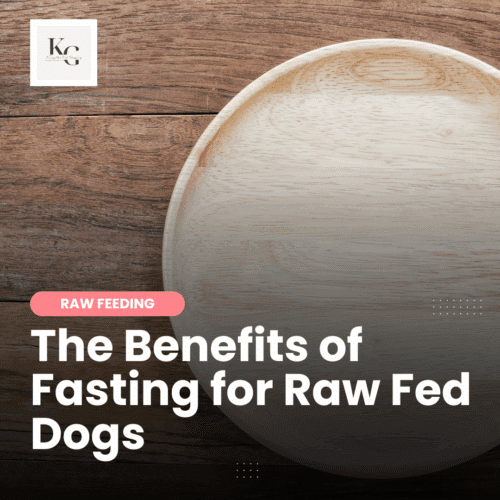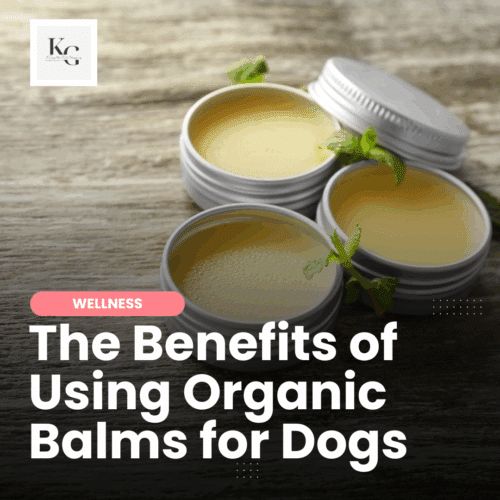Keep the Tail Wagging is supported by pet parents. I occasionally earn a commission (at no additional cost to you) when you click through an affiliate link to one of my favorite products. Thank you for your support. Read More
Feeding raw bones to dogs can be intimidating because many dog owners have been warned of the dangers of feeding bones to dogs. However, raw feeders feed raw bones to their dogs regularly with little issue. There are two types of raw bones that you'll learn about as a raw feeder: raw meaty bones and recreational bones. In this article, I'll explain the benefits of raw bones for dogs, how I choose the right raw bones for my dogs, and how I safely feed raw bones to my dogs.
Benefits of Raw Bones for Dogs
I feed raw bones to my dogs to keep their teeth clean by scraping tartar from the tooth and flossing between the teeth (as our dogs tear at the remaining meat on the bone), which boosts dental health, and freshens breath. But that’s not the only benefit. Feeding raw bones also…
- satisfy our dogs' chew drive, allowing our dogs to be dogs.
- calm our dogs down; seeing them zone out and relax while chewing their bones is fun.
- add a natural and fresh source of calcium to our dogs' diet.
- work out our dogs' neck, shoulder, and back muscles (as they chew).
- supports a healthy gut, improves digestion, and prevents loose stool and diarrhea.
- healthy and safe alternative to rawhide chews and cooked bones sold in pet stores.
Types of Raw Bones for Dogs
There are various types of raw and edible bones on the market.
Edible Bones
Edible bones are soft, raw bones with meat, tissue, and cartilage attached that can be consumed whole. I feed them for their nutritional benefits as a source of calcium, phosphorus, protein, iron, collagen, essential fatty acids, amino acids, and other vital nutrients. Edible bones, like rabbit feet, also contain fur, a natural fiber that supports gut health. Edible bones can be added to a meal or fed as individual meals. I choose bones that are a good size and fit for my dogs. The raw meaty bones I feed to my dogs include…
- chicken feet
- chopped whole chickens
- duck feet
- duck frames (carcass)
- duck necks
- lamb necks
- lamb shank
- pork ribs
- rabbit heads
- rabbit feet
- whole quail
I monitor my dogs when they're eating to ensure no one has trouble with their bones. When feeding raw meaty bones from the dish, I'll chop them into bite-sized pieces (they're still large because I have large dogs) to prevent the temptation to take their prize to enjoy on the sofa or bed.
Recreational Bones
Recreational bones are raw bones that dogs chew or gnaw for a period of time; they aren't intended for consumption. Recreational bones are fed to dogs for teeth-cleaning benefits and to satisfy their chew drive. Examples of recreational bones include beef knuckle bones, femurs, and marrow bones.
I no longer feed recreational bones to my dogs because of the risk of broken teeth. I have aggressive chewers and don't trust them with many recreational bones, which may not be as soft as the raw meaty bones I feed. I also don't feel comfortable giving puppies recreational bones and potentially damaging their new teeth.
My rule has exceptions, but I avoid recreational bones to be safe. Instead, I use them to make bone broth. For teeth cleaning benefits, I prefer air-dried chews from Real Dog Box. I have been a customer for several years and haven't had a negative experience with their treats and chews.
Cooked Bones
Cooked bones, including roasted, baked, boiled, dehydrated, and smoked, are dangerous for dogs. Cooked bones post the following health risks that can be expensive to treat or deadly:
- fractured teeth because cooking hardens the bone
- bone gets stuck in the esophagus
- sharp bone fragments puncture the esophagus, stomach lining, or intestines
- constipation or blockage due to overfeeding bones
Air-dried bones are not the same as cooked bones. However, it's important to source air-dried bones and chews from a trusted source. My dogs love the chews (beef tendons, backstrap) and bones (duck feet, duck heads) from Real Dog Box.
Where to Buy Raw Bones for Dogs
I order my bones through a local raw food co-op. If you don't have a co-op in your area, check out the following sources:
- Local, independent pet stores
- Butcher
- Local farms/homesteaders (people who raise their own meat)
- Raw Paws Pet Food
This is only a short list; there are many more sources.
Introducing Raw Bones to Dogs
Although I feed raw bones to my dogs, I understand the risks associated with feeding bones, including broken teeth, choking, blockage, and more. I'm willing to take this risk because (1) raw bones are biologically appropriate for dogs, and (2) I monitor my dogs when I feed bones.
I have large dogs and choose edible bones based on size (60 – 80 lbs), overall health, chewing style (gentle, moderate, or aggressive), and dental health.
- When a dog is new to raw bones, I sit with them and sometimes hold the bone while they chew; this prevents gulping.
- I choose bones my dogs can eat from their bowls (chicken and duck feet, chicken and duck necks); saving larger bones (rabbit heads, duck frames) for later.
- When feeding puppies, I start with chicken and duck feet, chicken necks, and rabbit ears. When their adult teeth come in, I will introduce them to slightly larger edible bones and chews.
All my dogs are healthy and have good dental health, thanks to a regular diet of raw meaty bones and natural chews.
How to Feed Raw Bones without the Mess
Smaller raw bones that can be consumed quickly and easily are fed with their meal (in a dog dish); bones that take longer to consume are fed outside (on nice days). Raw feeders are inventive, and I've seen several ideas on how to feed raw bones without making a mess:
- You can feed your dog on a tarp. If you have more than one dog, each dog will have a tarp. I don't recommend using a blanket or towel unless you're feeding on a hard surface because the blood and juices from the bones will soak through the towels and onto your carpet.
- You can feed your dog in a kennel. This gives the dog privacy while allowing them to take their time with their bone. This also prevents conflict if you have multiple dogs with one (or more) walking around trying to finish off everyone else's bones.
- You can feed your dog on a surface that is easy to clean, like tile, linoleum, or a large tarp.
Precautions When Giving Raw Bones to Your Dog
If you're nervous about feeding your dog raw bones, that's a good thing because it means you'll tread carefully. Although many raw feeders feed raw bones without issue, there is still a risk.
Risks Associated with Feeding Raw Bones
The main risks associated with feeding raw bones to dogs are mainly related to recreational bones and include:
- broken teeth, infections, and abscesses
- puncture of the esophagus, stomach lining, or intestines by sharp bone fragments
- blockage in the small intestines
Raw bones are viewed as safer than cooked bones because they're not as hard, and many don't splinter. However, every dog is different, and not every bone is a good fit for every dog.
Minimizing Risks When Feeding Raw Bones
I minimize risks by feeding bones that are safe for my dogs and avoiding bones that make me nervous. And matching the bone to each of my dogs' chew styles.
I don't feed the weight-bearing bones of large animals (cows, bison, deer) because I have aggressive chewers and worry that they will break a tooth. I occasionally feed meaty marrow bones to some of my dogs, which are weight-bearing bones, but I limit these because the marrow is high in fat and can be too rich for some dogs, leading to digestive upset. I take the bones away once the meat and marrow are gone.
I've found that raw meaty bones (edible bones) are a better fit for my dogs. They still come with risks (swallowing them too fast or whole), so monitoring a dog's behavior when feeding raw bones is important.
Monitoring My Dog's Behavior When Feeding Raw Bones
After more than ten years of feeding raw, I'm still cautious when feeding raw bones to my dogs. To make sure each of my dogs is safe, I monitor them when giving them bones. I keep a high-value treat on hand (something my dogs can't resist) and train a solid “drop it” to trade it for a bone if things aren't going well. For example, if I notice that my dog isn't chewing/gnawing the bone or splintering, I will trade the bone for the high-value treat.
Alternatives to Raw Bones for Dogs
Many raw feeders are surprised when they learn that I no longer feed recreational bones to my dogs. I never felt comfortable, but I did notice a difference in my dogs' teeth when I stopped feeding recreational bones. Although I've always fed edible bones, most of my dogs' food is ground raw.
Because my dogs' diet is primarily ground, I feed raw meaty bones daily and use two natural products to boost dental health. My dogs also enjoy chews several days a week.
Mad About Organics Herbal Dental Spray – after using this product consistently (twice daily) for two weeks, any plaque buildup chipped away when the dogs enjoyed chews.
TEEF! Daily Dental Care – I mix a small amount into my dogs' water dishes several days a week. This natural supplement boosts beneficial bacteria in the mouth, improving dental health.
Natural Protein Chews for Dogs – I also subscribe to Real Dog Box, a monthly subscription service that provides high-quality, natural, air-dried dog treats and chews. Real Dog Box chews are less messy, arrive every month, and don't take up freezer space.
Are Eggshells a Good Substitute for Raw Bones?
Eggshells don't provide enough calcium for my dogs, nor do other dairy products like cottage cheese, raw goat's milk, or kefir. Dogs are carnivores, and they eat bones. By removing raw bones from a healthy dog's diet, I'm denying their nature and cheating my dogs out of the other benefits of eating raw bones. If one of my dogs lost teeth, preventing them from enjoying edible bones, I would feed them a finely ground raw meal that included ground bone.
Eggshells and other forms of calcium are okay in a pinch, but I wouldn't regularly replace raw bones with eggshells. On the rare occasions I feed eggshells, I only feed them from eggs sourced from local farms and not rinsed with a cleaning agent. I dry the eggs and grind them into a powder that I add to their meals.
Egg shells are also great for enriching garden soil and repelling slugs.
Final Thoughts on Feeding Raw Bones to Dogs
If you're nervous about feeding bones, it's okay. I fed ground raw exclusively for years until I became more comfortable with raw feeding. But I think raw bones are essential to a dog's raw diet. Check out Raw Meaty Bones by Dr. Tom Lonsdale and Give Your Dog a Bone by Dr. Ian Billingshurst. These renowned raw food advocates shed light on why I should feed bones, helping me overcome my fear.







Not sure about the lamb horns; I’ve never fed those. Horn products aren’t a good fit for my dogs. I’m not sure if the turkey necks are too rich, they’re pretty high in bone content, so if they’re causing diarrhea, it may be a sensitivity. I would feed less (chop it into smaller pieces and add to a meal over a few days) to see if the diarrhea clears up. I’d also add Olewo Carrots to the meal when feeding turkey necks to soothe the tummy: https://amzn.to/3O0vs0n
Hi Kimberly: Thank you for the information on bones. What do I think about freeze dried turkey necks and beef trachea?
I didn’t know that marrow was high in fat. So are lamb marrow horns also high in fat? I have lamb marrow chips and lamb horn with marrow inside.
When I feed my dog the raw turkey neck her next poop is like pudding. Is this to rich for her? Your thoughts